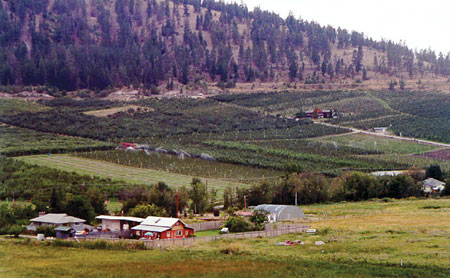| ||||||||||||||||||||||||||||
Proactive disclosure Print version |  Climate Change Impacts and Adaptation: A Canadian Perspective Agriculture
Agriculture is both extremely important to the Canadian economy and inherently sensitive to climate. As such, the impacts of climate change on agriculture have been addressed in many studies. Much of this research focuses on the impacts of warmer temperatures and shifting moisture availability on agricultural crops, while a lesser amount addresses the impacts of greater concentrations of carbon dioxide (CO2), changes in extreme events and increased pest outbreaks. Some studies have also examined the impacts of climate change on livestock operations, dairy farms and fruit orchards.
 Climate change is expected to bring both advantages and disadvantages for agricultural crops in Canada (Figure 3). For example, although warmer temperatures would increase the length of the growing season, they could also increase crop damage due to heat stress and water and pest problems. Impacts would vary regionally and with the type of crop being cultivated. Studies have suggested that yields of certain crops (e.g., grain corn in the Maritimes and canola in Alberta) may increase, while others (e.g., wheat and soybeans in Quebec) could decline.
Changes in the frequency and intensity of extreme events (e.g., droughts, floods and storms) have been identified as the greatest challenge that would face the agricultural industry as a result of climate change. Extreme events, difficult to both predict and prepare for, can devastate agricultural operations, as has been demonstrated several times in the past. For example, the drought of 2001 seriously affected farm operations across the country, causing significant reductions in crop yields and increased outbreaks of insects and disease. Drought and extreme heat have also been shown to affect livestock operations. Changes in extreme events tend not to be considered in many of the impact assessments completed to date. Recent literature also indicates that the timing of warming will be important to agriculture. Model projections and observed trends suggest that warming would be greatest during the winter months, and that night-time minimums would increase more rapidly than daytime maximums. Although warmer winters would reduce cold stress, they would also increase the risk of damaging winter thaws and potentially reduce the amount of protective snow cover. Climate warming is also expected to increase the frequency of extremely hot days, which have been shown to directly damage agricultural crops. Future changes in moisture availability represent a key concern in the agricultural sector. Climate change is generally expected to decrease the supply of water during the growing season, while concurrently increasing the demand. In addition to the direct problems caused by water shortages, the benefits of potentially positive changes, including warmer temperatures and a longer growing season, would be limited if adequate water were not available. Water shortages are expected to be a problem in several regions of Canada in the future. Much of the adaptation research in the agricultural sector has focused on strategies for dealing with future water shortages. Such adaptations as water conservation measures and adjustment of planting and harvesting dates could play a critical role in reducing the losses associated with future moisture limitations. Other adaptation options being studied include the introduction of new species and hybrids, for example, those that are more resistant to drought and heat, and the development of policies and practices to increase the flexibility of agricultural systems. Better definitions of critical climate thresholds for agriculture will also be beneficial for adaptation planning. Researchers classify adaptation strategies for agriculture into four main categories:
Adaptation will take place at all levels, from producers through government and industry to consumers. To be most effective, adaptation will require strong communication and cooperation between these different groups, as well as a clear designation of responsibility for action.
|